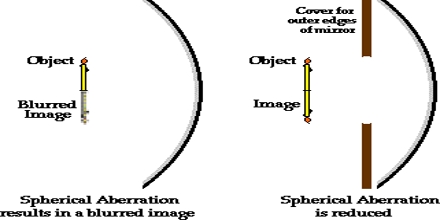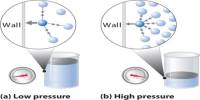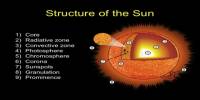Only parallel rays close to the principal axis of a spherical mirror will converge at the focal point. Rays farther away will converge at a point closer to the mirror. The image formed by a large spherical mirror will be a disk, not a point. This is known as spherical aberration. Parabolic mirrors don’t have spherical aberration. They are used to focus rays from stars in a telescope. They can also be used in flashlights and headlights since a light source placed at their focal point will reflect light in parallel beams.
Spherical Mirror vs. Parabolic Mirror
















